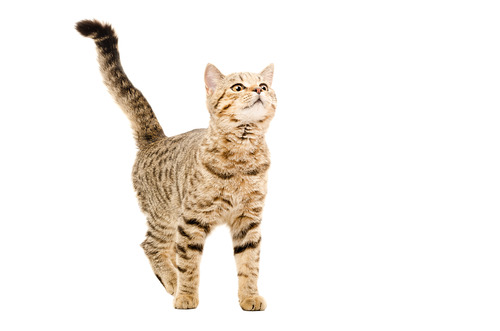Cat spraying is a behavior that can frustrate even the most patient pet owner. While it might seem like a sign of rebellion or bad manners, spraying is often your cat’s way of communicating. Whether it’s a territorial message or a response to stress, this type of behavior has roots in feline instinct—and it can be managed with the right knowledge and support. If you’re dealing with cat spraying in your home, this blog will dive into why cats spray, what triggers the behavior, and how you can help your cat feel more secure, all while protecting your home from unwanted messes.
What Is Cat Spraying?
Spraying is different from regular urination. Instead of squatting, a cat that sprays will back up to a vertical surface, raise their tail, and release a small amount of urine. This action is often accompanied by tail quivering and may be done in areas like doorways, furniture, or walls. Spraying is typically a form of communication. While both male and female cats can spray, it’s more common in males—especially if they haven’t been neutered. The behavior usually starts when a cat reaches sexual maturity, but it can happen later in life, especially during periods of stress or environmental change.
Why Do Cats Spray?
Understanding why your cat is spraying is the first step toward preventing it. Spraying is often a symptom of something deeper.
Marking Territory
Cats are naturally territorial animals, and spraying helps them establish boundaries. This behavior becomes more pronounced if there are new pets in the home, outdoor cats nearby, or changes in household dynamics.
Mating Behavior
Unneutered male cats often spray to attract mates and mark their presence. This is instinctual and typically starts when a cat reaches about six months of age. Neutering can significantly reduce this type of spraying behavior.
Stress and Anxiety
Cats are sensitive to changes in their environment. A move to a new home, a change in routine, or a new addition to the household can trigger anxiety. Cats may spray to cope with these stressors, using their scent to create a sense of familiarity and control.
Conflict with Other Pets
If your cat lives with other pets, tension or competition for resources can lead to stress-induced spraying. This is common in multi-cat households where there may be disputes over territory, food, or attention.
How to Tell If Your Cat Is Spraying or Just Urinating
Distinguishing between cat spraying and inappropriate urination is important for identifying the root cause of the behavior.
Look at the Location
Spraying often occurs on vertical surfaces, while inappropriate urination typically happens on horizontal surfaces like carpets or beds.
Observe the Posture
A cat that is spraying will usually stand with a raised, quivering tail and may tread slightly with their back feet. In contrast, a cat urinating normally will squat.
Check the Volume
Spraying involves releasing a small amount of urine. If you notice a larger puddle, your cat is likely urinating, not spraying.
How to Prevent Cat Spraying
Once you understand why your cat is spraying, you can take steps to manage or eliminate the behavior. Prevention strategies work best when they address both the behavior and its underlying causes.
- Neuter or Spay Your Cat: Neutering is one of the most effective ways to reduce cat spraying, especially if it’s hormonally driven. Most cats should be neutered before six months of age to prevent spraying from developing as a habit.
- Reduce Stress in the Environment: Provide a stable, low-stress environment for your cat. Keep routines consistent and provide plenty of enrichment through toys, climbing structures, and safe spaces for resting. For multi-cat homes, make sure each cat has access to their own food bowls, litter boxes, and resting spots.
- Clean Soiled Areas Thoroughly: If your cat sprays an area, they may return to that spot. Use an enzymatic cleaner to eliminate the scent completely. Avoid cleaners with ammonia, which can mimic the smell of urine and encourage repeat spraying.
- Block Outside Triggers: If your cat sees other cats outside, it may trigger territorial spraying. Consider closing curtains, applying window film, or using motion-activated sprinklers to keep outdoor cats away from your home.
- Use Synthetic Pheromones: Products like feline facial pheromone diffusers can help reduce stress and curb spraying. These synthetic scents mimic the calming pheromones cats naturally produce, encouraging them to feel more secure in their environment.
- Increase Litter Box Appeal: Make sure your cat’s litter boxes are clean, accessible, and appealing. The general rule is to have one litter box per cat, plus one extra. Try different types of litter or box locations to see what your cat prefers.
When Should You Talk to Your Veterinarian at Harlingen?
If spraying continues despite your efforts to resolve it, a veterinary visit can help rule out medical concerns. Sometimes, urinary tract infections or other underlying health issues can contribute to spraying-like behavior. Your veterinarian can also provide behavior support or recommend a referral to a veterinary behaviorist. At Harlingen Veterinary Clinic in Belle Mead, NJ, our team can help identify possible medical or behavioral causes behind your cat’s spraying. Call us today at (908) 359-2000 or book an appointment online to get expert support for your pet’s needs.





